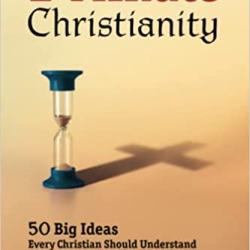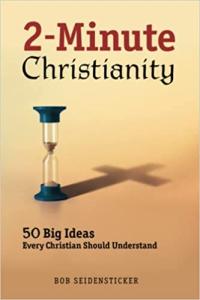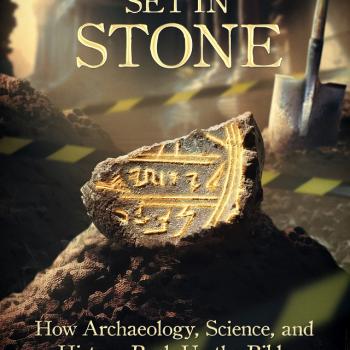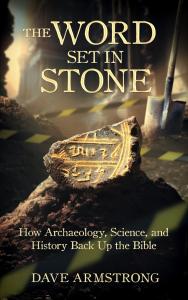Mt. St. Helens volcanic eruption (1980) [public domain / Pixabay]
* * * * *
John W. Loftus runs a large and influential site, Debunking Christianity, and has authored many books of atheist polemics. Previously I had posted my critique of Loftus’ online “Cliff’s Notes” deconversion story, which detailed his odyssey from a Christian pastor to atheism. I also have posted about his ridiculous response to my critique. In that he characterized me as an “idiot . . . joke . . . pompous ass . . . self-assured arrogant idiot . . . ignorant and uneducated . . . self-righteous know-it-all . . .” This was all from nine years ago. After this remarkably petulant display, I had little interest in replying to his writing anymore.
I also had constructed another post on my old blog, from comments, but these were lost (it was the old Haloscan system). Tonight while perusing Debunking Christianity I found a thread that probably contains a lot of what I had formerly posted. It’s entitled, My Deconversion Story — Criticized (10-16-06). Loftus wrote:
Dave Armstrong criticized my deconversion experience here. Please note my comment afterward. Does anyone understand why I don’t bother to respond in detail to such drivel? He wants to fault me. So why bother dialoguing with him about it? No matter what I say, I’ll be wasting my time. Oh, but I wish rather than fault-finding some Christian would seek to understand. But they cannot try, even though on any other issue of disagreement intelligent people will try. It’s called respecting people as people, and Dave’s Christianity does not do that with people who don’t agree with him.
And in comments:
I know there are a few Christians who visit here regularly who knew me when I was a Christian. They could easily dispell [sic] the false assumptions and distortions Dave writes about. Why? Because they know/knew me. But to do so they would have to reveal their names, since an anynomous poster would be dismissed out of hand. And they have reasons for not doing so. Suffice it to say that I was every bit the Christian that Dave now claims to be, except that I was a much better apologist than he. He can dispute this all he wants to, since he doesn’t know me. Fine. I can say no more. . . .
I’m just tired of pompous asses on the internet who go around claiming they are superior to me in terms of intelligence and faith. Such arrogance makes me vomit. I’m an easy target, because they simply didn’t know me. People like Dave would’ve looked up to me back then, but he has the audacity to go around claiming he is superior to me in both intelligence and with a deeper faith. I seriously doubt that he is, given what I’ve read from him. I was a much better apologist than he is now. And there probably are people smarter and with a deeper faith than I had too, so that doesn’t bother me. It the self-assured arrogant idiots out there, like Dave, who prefer to proclaim off of my personal experience that they are better than I. The fact is they do not know this! I’ll say it again. They do not know this!
I showed up in the comments. I’ll post that below. First, I’d like to cite a few Loftus utterances from posts on his blog that indicate what appears to be a great deal of manifest arrogance on his part (the very thing he accuses me of):
In a post (dated 8-18-15) about his hostility towards atheist Jeff Lowder (who believe that Christians should be approached respectfully), Loftus gives a marvelous display of modesty and self-effacing humility:
. . . the whole reason my writing gets such wide acclaim is precisely because I do understand Christianity.
. . . someone like myself who, a) has a wide breadth of knowledge, b) has more degrees in the areas Lowder knows something about than he and two of his cheerleaders combined (namely Jim Lippard and Bradley Bowen), and c) has more years thinking and reading about these issues than any of them have been alive.
From all I can see Lowder and his all male white philosophy student cheerleaders lack the breadth I have, and that is more important than having depth. It’s the breadth of knowledge I have that causes me to object to the value they place on the philosophy of religion (and to call for its end in the secular universities). But in fact I have studied it in depth as well. I don’t think the philosophy of religion is that important precisely because I’ve studied it in depth, just as I don’t think the philosophy of science is that important . . .
It’s the breadth of knowledge I have from years of thinking and reading based on a good solid foundational education that makes the difference. I had more class work with leading evangelical and Jesuit thinkers, theologians, historians, and philosophers to earn my three master’s degrees–including a year and a half of Ph.D. work–than most Ph.D. programs require. [As for the dissertation requirement, just think of my book “Why I Became an Atheist” which is called “a monster of reason and logic” by others]. . . .
Another divide between us is that Lowder too often disingenuously acts as if he wants an honest dialogue with theists when the real goal is to be respected as more important than he really is (*cough* a self-proclaimed philosopher). With me I don’t need to do this because I have the credentials, the knowledge, and a body of acclaimed work. I can honestly argue for my conclusions without worrying if I’m doing so in a way that will get me respect. [As far as respect goes just look at the authors who wrote chapters for me, and/or wrote blurbs for my books and/or asked me to write blurbs for their books.]
Prominent atheist Richard Carrier wrote a blistering critique (8-21-15) of Loftus’ silly feud with Jeff Lowder. Loftus showed up, offering one of his by-now patented reply-but-not-a-reply evasions:
There is already too much ignorance here for me to respond to, from both you and your commenters. I could respond to everything you and they have said, easily.
Just as he could have responded “easily” to my critique, but somehow never could find the time to do so . . . Carrier made the obvious point at the end of the combox:
And people need to understand if they publish something in public, they get criticized in public. They don’t get to control their critics.
Meanwhile, on his site Loftus blew a gasket and descended to virtual paranoia in this breathtakingly ludicrous reply to Carrier’s article:
Richard Carrier seems upset by my comment above and has said he was going to write a post on it. Who sent it to him? Grimlock? Why do people desire to stir up trouble? Why do others bite? Rather than commenting here to keep this between ourselves, or emailing me about it, Richard decided to escalate it into a blog post with a huge audience, one I don’t have. It must be nice being right about everyone he writes about. Why it’s as if they don’t have brains. Many of his readers may conclude I’m a piece of shit based on just one comment on a blog with over 5000 posts, and about whom I have seven published books. Never mind the damage. Doing so produces drama and drama produces hits, which in turn produces advertiser money which goes into Richard’s pocket. Okay. I guess. . . .
My dispute is not with him, but with Jeff Lowder, whom I consider to be both dishonest and a hypocrite. . . .
I knew in advance Richard was writing his post about my “weird” “flameout currently going on” so I emailed him, asking “Do you care to talk?’ No response. So Richard’s problem solving skills are on display. I think he is too smart for his own good. What that means is that Richard is smart enough to justify almost anything, and that’s a recipe for, well, justifying almost anything for personal gain, even though others who are not so smart can see exactly what he’s done, arguing for that which benefits him personally.
I have no ill will toward him. I do toward Jeff Lowder.
I guess anyone who critiques Loftus (even a renowned and credentialed fellow atheist) gets the “you think you’re a know-it-all!” treatment, just as I did nine years ago. In another post (3-6-13), Loftus whines like a six-year-old not picked for a sandlot baseball team, over Dr. William Lane Craig (a philosopher one of the best Protestant apologists and debaters) doesn’t want to debate him. It’s embarrassing to read. He states:
. . . how many of his debate opponents have written and/or edited the number and quality of books that I have? Reasonable readers can decide for themselves whether I’m a worthy foe.
He goes on and on about how several other people think he is the cat’s meow, and how many blurbs for books he has written (!!!). Then in the comments, after being asked why Dr. Craig won’t debate him, Loftus offers this unbelievably self-important reply:
My best guess is that he really fears me, that is, at a minimum he fears my influence. He does not want to introduce me to a larger audience. He never fears doing that with any of the other atheists he has debated. Yes, Ray, I’m that good! Have you read any of my works yet? You should!
Wow!
But back to my critique of his deconversion and his hysterical replies.
Ironically, in the combox of Loftus’ post (the one I mentioned at the top), even two atheists came away with a vastly different perception of my critique than Loftus did. Matthew wrote: “the tone of Dave’s critique is a bit pleasant and not really nasty, . . . Dave Armstrong seems a likeable kind of a guy.” Likewise, “whizler” opined: “I don’t believe Dave Armstrong’s response was directed at you personally. . . . My advice: don’t take it personally. While you may be the putative target, it’s a different audience Dave is speaking to.” Here are my comments in the combox:
I don’t regard faulty premises and thinking as necessarily a character flaw: only if it was deliberate, and I didn’t claim that John’s errors were that.
The apologist’s main audience is the Christian, because they are the ones I am trying to equip to have a rational, defensible, plausible, cogent faith. I don’t expect to persuade any atheist. If it happens, it’s an extra “bonus.” My job is to defeat the “defeaters,” as Alvin Plantinga would say.
If John Loftus must take that personally, when it has nothing to do with that at all, and must do so in every conceivable universe, so be it. His hyper-sensitivity and ultra-thin skin are beyond my control, and I think at least two people here can see that (for which I thank them).
If we want to talk “personal”, just count up all the name-calling, epithets and rank insults John has made towards me. All I’ve done is basically protest against those and called for calm, rational discussion minus those silly distractions.
It occurred to me that if John Loftus is so much sharper than I am, and so much of a better apologist for the faith he later abandoned, then why is it he fundamentally misunderstands the role of the Christian apologist and who it is they primarily write for?
* * *
1) We’re all sinners. No one is any better, at bottom, than anyone else. Whatever good is in us is because of God’s grace, not our inherent superiority to someone else.
2) I simply disagree with your positions and your denigration of Christianity. Your position is not you. If you write about such things publicly, then do you not expect that Christians will respond to them? You actually encouraged me to respond to your deconversion, so I did.
3) Your problem (at least insofar as this version of your story suggests) is intellectual, not a matter of dishonesty. Bad premises lead to bad conclusions. I didn’t see anything that would bring any Christian doctrine into question at all. Sorry, that’s my honest opinion. Or am I dishonest?
4) Well, I know one thing: you are extremely sensitive to Christian critiques, even when done respectfully and not attacking you as a person or immoral scoundrel, etc. I can understand that, but it has the effect of alienating those (such as myself) who simply don’t have the attitudes you are attributing to them.
5) I understand that many Christians have treated you rottenly. I’ve seen some recent things that shocked me and were terrible witnesses to Christianity. That’s contemptible. But I am not among them. I don’t share their attitudes. I never said you were especially evil (more than any other sinner, of whom I am foremost) or damned, etc. Catholics (to their credit, and we have many faults, believe me) generally don’t do that. We leave those judgments up to God.
6) You think I’ve attacked your person? Good grief. You should see the amazing things that are written about me. And the worst comes from fellow Christians (some of them even Catholics).
7) Now get this straight, John (in big capital letters):
I *****DO***** CONSIDER YOU TO BE A SINCERE AND HONEST AND THOUGHTFUL PERSON.
Got that? Now if you say I am lying, then obviously all discourse is over. But it wasn’t because of me. God is my witness for that, and also (since you think He doesn’t exist) all who have read our exchanges.
8) If I didn’t take you seriously, I would simply ignore you, just like I do (almost always) the anti-Catholics, liberal Catholics, [radical Catholic reactionary] Catholics, flat-earthers, etc. You have it exactly backwards, and it is amazing how often you do that.
9) I was simply replying to the reasoning you gave. Sorry you don’t like that, but this is how intellectual exchange works. It’s astonishing to me that you have such a thin skin, especially since you have an academic past. Are you truly this unable to withstand any critique? If so, then I suggest to you that you don’t encourage a person to analyze your deconversion, if this is how you’re gonna react. It’ll keep your blood pressure down to an acceptable level.
10) If I failed to give you sufficient benefit of the doubt, I apologize. I thought I had done so, but maybe not. One can always be more charitable, no doubt.
11) It has little to do with how “smart” or “stupid” one is. Rather, all Christians must be equipped to deal with objections or they will be in trouble. I’m writing this paper mostly for the benefit of Christians, so I can help them avoid your sad fate.
12) It’s partly intellectual and partly a loss of faith. No Christian can believe apart from God’s grace and his own faith. This is what we believe. I’m sorry if it offends you to state it.
13) Of course there are hundreds of particulars I don’t know about. I’d have to see those to comment.
14) If your brief deconversion is so woefully inadequate, why put it on your blog at all? Of what good is it if it doesn’t explain 1/100th of your journey? Why don’t you take it down? It will actually mislead people, if it is so bad and utterly incomplete. . . . take the Reader’s Digest version down since no one can understand you without reading your book. I find that strange. I don’t require someone to read any of my books before they would have the slightest inkling of the cause of my conversion. They can learn that in about 15 pages. Anyone who has a head on his shoulders should be able to summarize complex reasons into an abridged version. This is the heart of what it means to be a good teacher. In my upcoming book [The One-Minute Apologist] I had to take major Christian doctrines and distill the defense of them into two pages each. This was very difficult! I think you could do similarly with your deconversion: certainly in 20-30 pages folks could get the main reasons for it.
15) I would be happy to read it [John’s book] and reply, provided I get it in html or Word or some computer format, for free. I also would need to see some semblance of open-mindedness and good-natured spirit of dialogue from you before I would even consider spending that much time. I spent four hours last night. To answer your book with another million objections to Christianity would take possibly an entire week or more (if I were to devote myself to a thorough dismantling of the atheology therein). But if all you intend to do is call me a “joke” and spew a bunch of paranoid nonsense, as here, forget it. My time is too valuable for that sort of silliness.
16) I just think it’s very sad that an intelligent person like you can offer nothing but mockery and name-calling when someone gives you a (I think) thoughtful critique of your deconversion. You should welcome the opportunity as a chance to disprove Christianty by disposing of the critique. Instead you take the fool’s way out of epithets and irrational dismissal and false attribution of any number of mythical characteristics to your dialectical opponent.
No one is impressed by that. I don’t think even your fellow atheists (at least the more rational, less emotional ones) would be all that heartened by this pathetic performance (if not downright embarrassed).
I think you can do a whole lot better than this. You have three Masters degrees, for heaven’s sake. If you can’t even respond rationally and calmly to a critique of this nature then all that does is confirm in our minds all the more that the basis of your conversion was not so much rational as it was emotional and non-rational (or that you are so insecure in your atheism that perhaps your conscience is being troubled by criticism of it and you are on your way back to Christianity). You know the old saying: “the drowning man fights the hardest right before he succumbs.”
Is that the impression you wanna give? “Come to atheism, for all the wrong reasons or none at all, or just because of sheer emotionalism! If anyone questions my ‘reasons’ I’ll pretend he thinks I am a dishonest, rascally idiot, call him a ‘joke’ (three times) and dare him to read to read my book so I can ignore his critique and mock him again!”
If atheism is true, my friend, it ain’t gonna be because of this kind of reaction. Nor will these melodramatic histrionics convince anyone.
17) I did no psychology. I never attempted mind-reading. It’d be awful nice if you pointed out where you thought I did this. But something I did is obviously extremely threatening to you. A guy as educated as you becoming literally unhinged over a simple Christian response to your deconversion? Something’s going on. I have no clue what, but I am experienced [enough] to identify an extremely irrational reply when I see one. I realize others are personally attacking you at the present time, but it doesn’t follow that this was my motivation or intention. It was not at all.
18) I responded to the words you wrote. Apparently that is a novelty to you. I think it is rather humdrum and ho-hum: one guy responding to another, after being asked to do so.
19) [John] To think you could pompously proclaim you are better than me is beyond me when you don’t know me.
Where did I do that, pray tell? For the life of me I don’t remember doing so.
20) So let me get this straight. You claim I think I am “better” than you, when I don’t at all. Then you take the false premise and build a castle of sand atop it: now it is supposedly a defensive mechanism I use. And this after you have been bitching about me supposedly doing inappropriate psychoanalysis of you. That’s precious.
21) I can’t comment on something you write? I didn’t exceed any proper bounds. I simply replied to what was there. There is always some speculation with conversion stories. I don’t think they have to necessarily be outrageously presumptuous, as you seem to think.
22) [John] No freebie book for you either (Are you in the habit of asking for handouts? Then take up a collection).
No skin off my back. I’d be glad to give you any of my 11 e-books for free. I wouldn’t even consider it a handout. I would consider it part of my duty as an apologist.
23) For that matter, don’t reviewers of books get them for free? Think of all the free advertising on a Catholic site John could get. What a golden opportunity! But are reviewers’ copies considered “handouts”?
24) If I ever see John’s book for a quarter at an AAUW book sale, I’ll pick it up. But my budget is too limited to buy atheist books: especially from those currently with an axe to grind against me.
I also responded to another atheist on my blog:
What truly baffles me about all this hysterical response is: how do you atheists expect a Christian apologist to respond to a deconversion story? I defend Christianity (I myself happen to be a professional apologist, in fact).
This sort of story starts with the assumption that it gives a rational basis for the rejection of Christianity. Obviously, then, my task is to show how the reasons given fail in their purpose. What do you expect? That I’ll say, “well, reasons 4, 12, and 23 are compelling against Christianity. Therefore, I resign my vocation as an apologist immediately and reject Christianity”?
How ridiculous will this become? Of course I will disagree with the reasons offered, as long as I remain a Christian and an apologist. If I didn’t, I would be in the wrong line of work. This is some terrible, unspeakable crime, that an apologist is an apologist, and a Christian a Christian (hence reasons like one)?
What is so scandalous and outrageous about an apologist for position x showing how the reasons person y (former adherent of x) gives for rejecting x are groundless or insufficient as a basis for rejecting x?
What did you expect? I gave my reasons as to why I thought they were insufficient. Atheists do this to Christians all the time. Actually, you do a great deal of non-rational stuff, whereas my reply was strictly within the bounds of reasoned analysis.
You subject us to endless mockery, assume that we are ignoramuses, make fun of our worship and most deeply-held beliefs, call us “insane” (I’ve seen that more than once at Debunking Christianity), cut down the God we believe in, belittle Jesus by saying He didn’t even exist, attempt to rip the Bible to shreds, make out that Christian biblical ethics are utterly abominable (John did that this very day at Triablogue), and on and on and on. There is no end to it. And don’t try to deny it. Proof is abundant and easily obtained.
Yet if we dare turn the tables and simply disagree with your ideas, then all hell breaks loose. It’s Chicken Little. I don’t buy it. What’s good for the goose is good for the gander. You can’t take your own medicine. If you can’t stand the heat, get out of the kitchen.
How does it help your case to shamelessly lie about opponents? Whether I am an arrogant SOB or not is for others to judge. I say I am confident. Admittedly it is a fine line sometimes between that and arrogance. But for John and others to say that I have hatred or think he is an evil person or damned and all this rotgut that I supposedly think, is completely groundless, unethical and uncalled-for.
As I’ve found in other such conflicts (the bane of the apologist’s life — and often sadly coming from fellow Christians), once the irrational anger sets in, then even conciliatory explanations are disregarded and themselves mocked and assumed to be insincere.
I’ve stated repeatedly that I bear no ill will against John, that it isn’t personal, that I don’t think he is an especially “bad” person (since we Christians think all men are fallen sinners). I’ve tried to explain how Catholics don’t judge a person (even an atheist or former Christian) as damned. We don’t have the Calvinist view that someone who rejected faith necessarily could never have had it. So I don’t have to deny this in John’s case.
So am I to be believed or not? Why do you want to make something a rotten ugly thing when it is simply an honest disagreement? What is so difficult about this to understand? I wrote about your own deconversion story and you didn’t hit the roof and immediately vomit up gallons of personal attacks and knee-jerk reactions against me. You did nothing. How preferable and dignified compared to John’s hyper-sensitive, hysterical “reply”!!!
I note once again that John asked me to respond to his deconversion after he saw that I did so with you. Man, next time I’ll think twice before fulfilling an atheist’s request to critique some writing of theirs . . . I don’t suffer the folly of groundless attack in place of reasonable discussion very well at all. Only my enjoyment of the absurd, ironic humor of it all saves me from lots of potential sins in reacting to this hogwash . . .



























